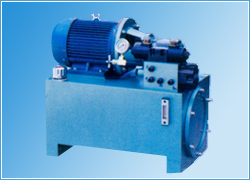Products
Search
Cooperation
| China Metallurgical Network |
| China Electrical Equipment Industry Association |
| China Mechanical Engineering Society |
| China Iron and Steel Association |
| China hot processing network |
| China Electric Furnace Network |
| Chinese equipment network |
| China Electric Furnace Network |
| Baidu Google |
PRODUCTS

| Other Equipment (include vacuum furnace and insulation furnace) The vacuum furnace made by our company, in a vacuum condition, the use of zinc vapor infiltration of the workpiece within the matrix layer to form, therefore, in the process of reducing zinc oxide during production, which reduces the amount of zinc and the cost of dialysis. Compared with hot-dip galvanizing, only roughly 1 / 3, it widely used in electric power, communications, construction, railway, road systems, shipbuilding industry and other fields, such as: high strength bolts solid, common fasteners, arm, non-standard golden wares, porcelain power base, metal pipes, metal parts, scaffolding spike, pulley motor vehicles, express way guard rails. Main Characteristics: Vacuum infiltration of zinc powder original from zinc power infiltration, which retains the infiltration of zinc powder and has the advantage of development and innovation. 1, zinc vacuum infiltration under vacuum condition, so it weakens or avoids the zinc oxide during the infiltration of zinc powder, improved the corrosion-resistant of infiltration parts and reduced the amount of zinc powder, finally greatly reduced zinc dialysis costs; 2, hot-dip galvanizing and coating pieces of the base for metallurgy, more than 80um, pieces of zinc impact, prone to falling off the coating, and the dialysis process zinc to form zinc-iron alloy layer for the spread of metallurgy, layer up to more than 100um, hardness of the surface, uniform layer, in the process of removal by the impact will not come off layer. 3, compared with hot-dip galvanizing, the fasteners on a pre-plating additional space, the thickness of the coating difficult to control, whether "over regulation" (coating thickness) or "regulation" are prone to reduce the role of fasteners , the tolerance has not been a problem to solve; Vacuum and zinc, zinc infiltration in the thickness of 20 ~ 120um within the framework of control, the thickness of the layer between 30 ~ 50um not need additional space in order to completely resolve the issue of fasteners with tolerance and increased the role of the fasteners. 4, the zinc vapor released during the hot-dip galvanizing process will cause the air pollution. "blasting" flying out of the high-temperature liquid zinc threats to personal safety, while zinc was at vacuum infiltration sealed container, completely eliminating the zinc vapor in the atmosphere of pollution, and complete protect the operators avoiding the zinc poisoning and burnt by the high-temperature zinc steam; 5, 50um thickness of the layer corrosion-resistant up to 20 years or more, pieces of dialysis in addition to the surface, the inner layer will have an anti-corrosion capability, so the anti-corrosion life than the hot-dip galvanizing. (Hot-dip galvanizing standards: pieces of plating thickness is greater than or equal to 5mm, zinc thickness should not be less than 86um, its corrosion-resistant life of 10 to 15 years), due to the fact consignment packed in the process of collision and atmospheric pollution, After hot-dip galvanizing steel used pieces of 8 years, that is in need of painting to deal with corrosion. In addition, the process meets the requirements of anti-corrosion, may also increase surface hardness of infiltration zinc parts and wearing resistance of parts. 6, uniform zinc dialysis surface, while twice hardness higher than the hot-dip galvanizing, can be used to those uneasy hot-dip galvanizing materials, such as, high strength steel, white cast iron, steel spring, etc; 7, with a high temperature anti-oxidation, still good under 600 degrees, avoided bolts "killed" under the high temperature and if the hot-dip galvanizing reaches 600 degrees on the surface oxidation that is all. 8, due to serious environmental pollution of the hot-dip galvanizing, urban areas are unable to build factories, and the vacuum infiltration of zinc there was no damage to the environment and human, in line with the requirements of environmental protection departments, can build factories in the urban areas, thereby reduce transportation costs. |



